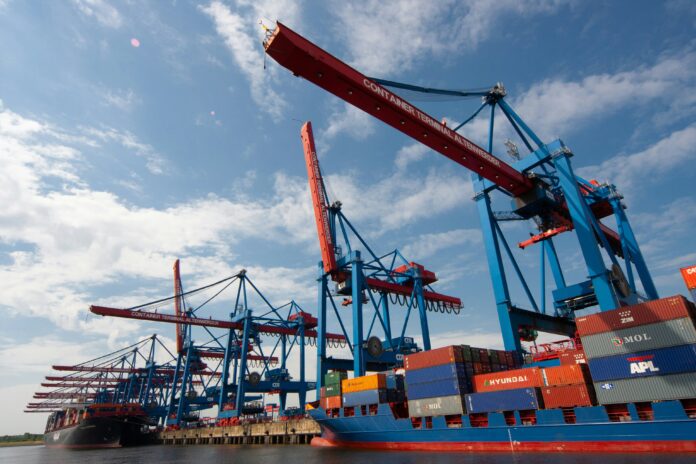
Global trade powers modern economies. Every day, millions of goods cross international borders—fueling industries, creating jobs, and connecting consumers to products from every corner of the world. But behind this seemingly seamless flow of goods lies a complicated reality: trade compliance.
For businesses in North America, customs and compliance requirements have become more complex than ever. E-commerce growth, stricter regulations, and new security mandates are reshaping how companies move goods across borders. Organizations are realizing that digital transformation is no longer optional—it’s the foundation for staying competitive in international markets.
Understanding Trade Compliance
Trade compliance is the process of ensuring that imports and exports meet all regulatory requirements of the countries involved. This includes:
- Properly classifying goods using Harmonized System (HS) codes.
- Submitting accurate and timely customs filings.
- Paying the correct duties and taxes.
- Complying with trade agreements, security programs, and sanctions.
Even small errors—like a mistyped tariff code or missing documentation—can cause significant disruptions, including border delays, fines, or cargo seizures. For businesses, compliance is not just about following rules; it’s about protecting supply chain integrity and customer trust.
The Challenges in North America
The U.S. and Canada are two of the most regulated markets when it comes to trade. Each has its own agencies and systems:
- U.S. Customs and Border Protection (CBP) manages imports into the United States using platforms like the Automated Commercial Environment (ACE).
- Canada Border Services Agency (CBSA) oversees Canadian imports and exports through systems like the Advance Commercial Information (ACI) program.
For companies that operate across both borders, compliance means understanding and integrating two different sets of rules. Add to that international trade agreements, evolving tariff policies, and security regulations, and the task becomes daunting.
Why Manual Processes Fall Short
Traditionally, compliance involved paper-based filings and phone calls with customs brokers. But today’s global trade environment has outgrown such methods.
Consider these scenarios:
- E-commerce retailers handling thousands of daily shipments cannot manually prepare each customs declaration.
- Logistics providers managing cargo across air, ocean, and trucking lanes need instant data sharing across multiple systems.
- Manufacturers sourcing parts from different countries require visibility on duties and tariffs to manage costs.
Manual approaches are simply too slow, error-prone, and costly. This is where digital transformation becomes essential.
The Role of Digital Trade Solutions
Technology is redefining compliance in three major ways:
- Automation
Automated platforms can generate customs filings, validate HS codes, and transmit data directly to CBP or CBSA. This reduces errors and speeds up border clearance.
- Integration
Modern trade systems integrate with carriers, freight forwarders, and customs agencies. This creates end-to-end visibility and eliminates the need for duplicate data entry.
- Analytics
Data-driven insights allow businesses to identify bottlenecks, optimize routes, and forecast duty costs. Compliance shifts from being a burden to becoming a source of competitive advantage.
Key Areas of Transformation
E-Commerce Shipments
Online shopping has redefined consumer expectations. Customers want faster deliveries—even for cross-border parcels. Customs programs like Entry Type 86 in the U.S. allow low-value shipments to clear faster, but businesses need systems capable of processing thousands of declarations daily.
Multi-Modal Transport
Shipments often move across multiple modes—ocean, air, rail, and truck—before reaching their destination. Digital solutions ensure compliance at every stage, from ISF filings for ocean cargo to ACE/ACI eManifests for trucking.
Security Compliance
Trade security programs like C-TPAT (Customs-Trade Partnership Against Terrorism) in the U.S. and PIP (Partners in Protection) in Canada require strict adherence. Digital platforms help businesses document, track, and report their compliance.
Logistics and Freight Forwarding
Logistics providers face mounting pressure to deliver goods on time while complying with diverse regulations. Automation reduces costs and allows providers to offer value-added services.
Manufacturing and Retail
For companies importing raw materials and exporting finished goods, compliance ensures smooth supply chain operations. Delays can disrupt production lines or miss critical retail sales windows.
Small and Medium Enterprises (SMEs)
SMEs often lack dedicated compliance teams. Digital solutions make it possible for them to expand internationally without being overwhelmed by regulations.
The Future of Trade Compliance
As global trade evolves, compliance will continue to adapt. Several trends are already shaping the future:
- Artificial Intelligence – AI is being used to predict high-risk shipments, automate classification, and improve accuracy.
- Blockchain – Distributed ledger technology promises greater transparency and security in trade documentation.
- Sustainability Reporting – Environmental, Social, and Governance (ESG) standards are pushing companies to disclose the carbon impact of their supply chains.
- Global Connectivity – Businesses increasingly require platforms that can handle multi-country filings through a single interface.
Preparing for What’s Next
For businesses in North America, success in international trade depends on three core capabilities:
- Accuracy in documentation and filings.
- Speed in responding to evolving regulations.
- Visibility across the supply chain.
Digital transformation is not about replacing compliance teams—it’s about equipping them with the tools to work smarter, faster, and more reliably.
Conclusion
Trade has always been the lifeline of economic progress, but the way it’s managed is undergoing a profound transformation. Companies that embrace automation, integration, and data-driven compliance will be better positioned to compete globally.
In this broader conversation, organizations like CrimsonLogic North America illustrate how digital solutions are reshaping the compliance landscape and enabling businesses to adapt to an increasingly complex world of trade.





